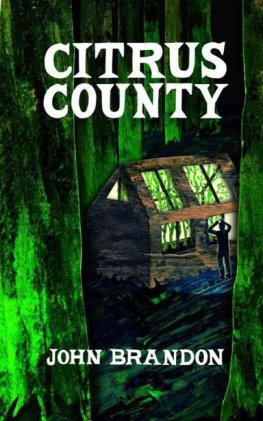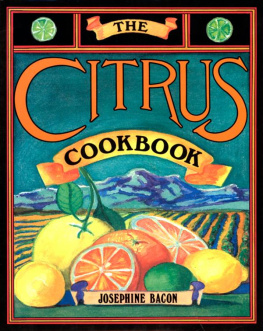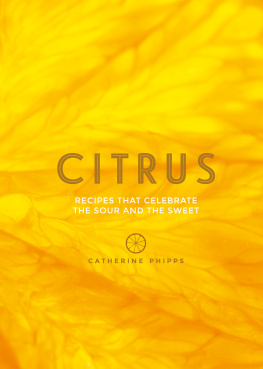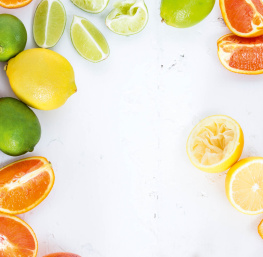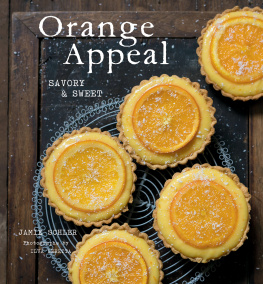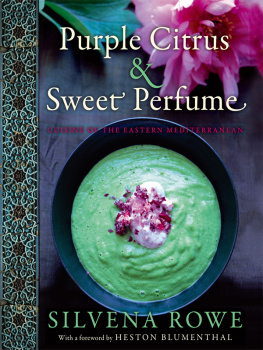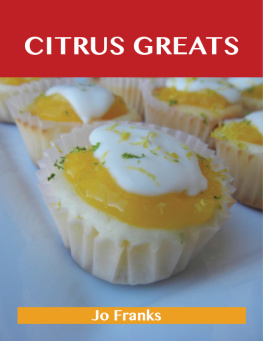


Publishing Director: Sarah Lavelle
Creative Director: Helen Lewis
Senior Designer: Nicola Ellis
Photographer: Mowie Kay
Food Stylist: Marina Filippelli
Prop Stylist: Iris Bromet
Copy Editor: Sally Somers
Production: Tom Moore and Vincent Smith
First published in 2017 by Quadrille Publishing,
Pentagon House, 5254 Southwark Street,
London SE1 1UN
www.quadrille.co.uk
Quadrille is an imprint of Hardie Grant
www.hardiegrant.com.au
Text Catherine Phipps 2017
Photography Mowie Kay 2017
Design and Layout Quadrille Publishing 2017
The rights of the author have been asserted. All rights reserved. No part of this book shall be reproduced, stored in a retrieval system, or transmitted by any means electronic, mechanical, photocopying, recording, or otherwise without written permission from the publisher.
Cataloguing in Publication Data: a catalogue record for this book is available from the British Library.
eISBN: 978 178713 023 4
contents
citrus notes
For Adam and Lilly
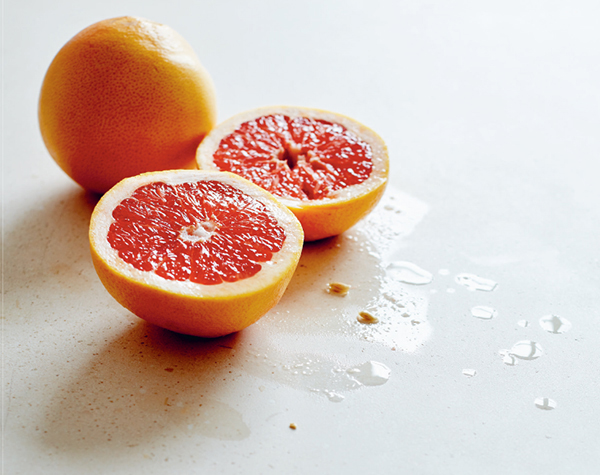
Writing about citrus fruits these last months has been a joyous experience. I can, along with other food writers who reside in the chilly north, live vicariously through the ingredients I use. I pick up an Italian lemon and have a strong sense of place terraced hillsides, a glimpse of Capri blue sea in the distance, a light breeze made dense by the scent of blossom. It is romantic and evocative, and just holding and smelling a lemon can bring that warmth into the most dreary of winter days.
I have been lucky enough to (briefly) live in a place where I could daily pick limes, sour oranges and grapefruits from the trees. Even now I can regularly visit my parents in Greece, where the pervasive scent of citrus is forever entwined with that of the dusty, resinous mountain herbs. However, when I take time to think about citrus and everything I associate with them, I realize my overriding memories are rooted in the domestic. I remember the moment I walked into the kitchen and caught my (then five-year-old) son studiously zesting one of my best Amalfi lemons, for the smell, mummy!. I think about the scent of the kitchen on baking or preserving days drizzle cakes warm with a mandarin syrup and shelves lined with jars of curd and marmalade. A chicken roasting in the oven, its overwhelming savouriness lifted by a sharp, sweet hit of lemon. The rum punches during the rained-off summer party, when sour orange juice, stored from winter, is mixed with sherbety lime. And most recently, the thumbnail absentmindedly scraping away at the skin of a bergamot or mandarin, also to release the smell.
I think further back, all the way to my childhood, and realize how the romance of citrus is wrapped up in nostalgia and the seasons and that this informs the things I make year on year. And whilst I associate summer with lemons lemon and elderflower cordial, lemonade, mousses decorated with borage leaves, clean-tasting ice creams the winter months that fall either side of Christmas are about orange-hued fruits. There is the memory of the satsuma in the Christmas stocking (desiccating peel left on the bedside table, well into January; an instant pot pourri), a small table laden with citrus-flavoured Turkish delight and marzipan sitting alongside Medjool dates, sugared almonds and nuts ready for cracking, and mandarins in the Christmas trifle. These days I also look forward to the leafy citrus displays that appear from November, ready to be transformed into cakes, puddings and liqueurs. I will think about starting Christmas dinner with a palate-awakening puntarelle and orange salad, and make gallons of bergamot-or mandarin-cello. In January, I wait for the first Seville and blood oranges to come into season, for annual marmalade and curd making. And when the late winter palate becomes jaded from all the rich comfort food, and I mourn the loss of bergamots, sour oranges and mandarins, I ease myself into spring by using an abundance of sweet oranges, limes and lemons in salads, soups and casseroles.
I love all of the individual flavours and aromas of citrus, and the fact that I can use them in a wide range of international dishes. Their progression, historically, from East to West means that few cuisines are forced to do without them. And whilst we do make certain associations lemons mainly with the Mediterranean countries of Europe, the Middle East and Africa, limes belonging to the tropics it is of course more complicated than that. Every country has made them their own, regardless of climate, presumably as their thick skins and waxy (often now waxed) zest have made them very transportable, as has their keeping ability once preserved. For evidence of this, look no further than the British with our enduring obsession with marmalades, lemonades and citrus desserts such as Sussex Pond Pudding.
Explore the most popular dishes of any particular citrus fruit and you will realize how essential they are to a variety of cuisines we love, and hopefully do not take for granted. For example, the lime. In the UK, limes were once a rarity, found only in processed products, hardly ever found fresh. Now they are everywhere and used as widely as lemons: we zest and juice them into desserts, such as a tart Key lime pie, and we add them along with lemongrass and fragrant kaffir lime leaves to dishes from the Far East. We add their juice to salsas and guacamoles, use them to cook fish for ceviche, add them dried to Middle Eastern dishes, pickle them (think sweet/sour in the Americas, searingly hot in India), use them as the basis of the best rum punches, mojitos, caipirinhas. They can also be used in dishes in which lemons are traditional in fact, in certain areas where nomenclature is ignored, they are used interchangeably anyway.
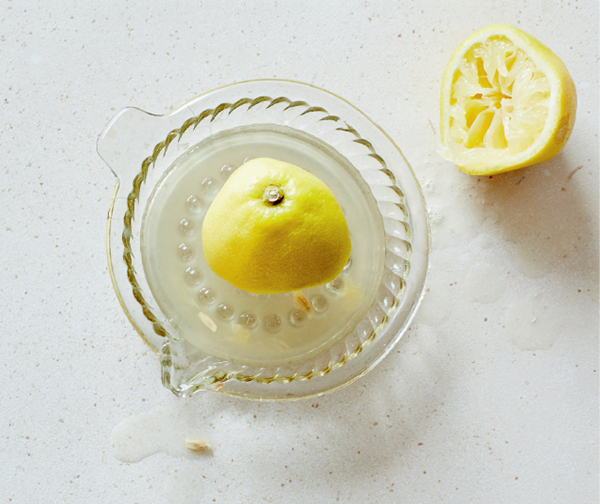
Lemons, oranges and grapefruit are similarly versatile, and it is probably only a matter of time before yuzu (and who knows what will come next) are as widely available and as ubiquitous. This does not dismay me; on the contrary, I am still eager to explore the possibilities. I have found while researching this book when I have revisited old favourites as well as experimenting with others how well citrus fruits can be combined with one another, and how a process used in one particular cuisine, using a particular citrus fruit, can be applied to another. Perhaps the best example of this is yuzukosho, the hot/sour/salty Japanese condiment. It was a truly exciting day when I discovered how well the same method worked with mandarins, lemons and limes.
Above all, I prize citrus for their usefulness. They are simply the most helpful ingredients you can have in your kitchen. Putting aside their own complexity of flavours, they are completely transformative. They enhance savoury qualities of some ingredients and bring out the sweetness and flavours of others. They make ingredients sing, individually and in unison. They can simultaneously add depth and lightness, lifting the flattest of dishes. Citric acid can stop ingredients from turning black and brown. They are preservative and have setting qualities. They can cook and tenderize fish and meat. They even help milk become buttermilk, cheese and yogurt. They are also very good for you: not only are they packed full of antioxidants and vitamin C, citrus fruits are credited with helping with everything from hypertension to depression. They are simply miraculous.


